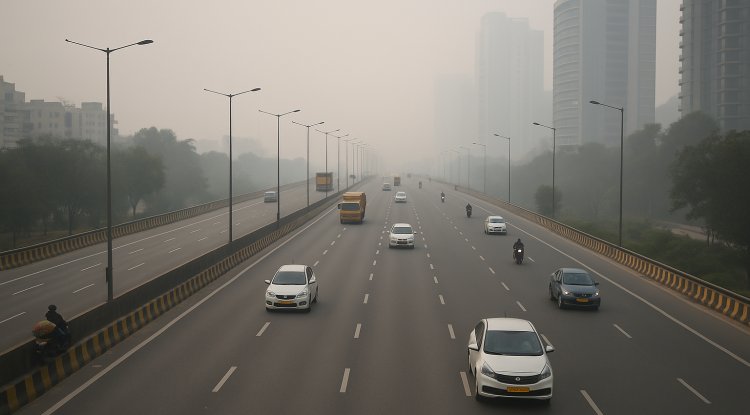India’s Push for Renewable Energy: A Game-Changer for Sustainability
India is advancing its renewable energy strategy, focusing on solar and wind power to meet its climate commitments, enhance energy security, and reduce fossil fuel dependency. The push for green energy is transforming India's energy sector.

India’s Push for Renewable Energy: A Game-Changer for Sustainability
India is fast becoming a global leader in the renewable energy sector, driven by a growing commitment to reduce its carbon footprint and meet climate goals. With the country's increasing energy demand, the adoption of solar and wind power has emerged as a critical part of India’s energy strategy. By transitioning away from fossil fuels, India aims to not only secure its energy future but also contribute to the global fight against climate change.
Over the last decade, India has made substantial strides in expanding its renewable energy capacity. As of 2024, the country has achieved a renewable energy capacity of over 170 gigawatts (GW), a remarkable achievement that places it among the top renewable energy producers in the world. The Indian government has set ambitious targets, including a goal to achieve 500 GW of non-fossil fuel capacity by 2030. This drive is part of India’s broader commitment to reduce its carbon emissions intensity by 45% by 2030 and reach net-zero emissions by 2070. Solar and wind power have been central to this transformation, with solar energy alone contributing to nearly 40% of the total renewable energy capacity.
The transition to renewable energy is also a crucial element in India’s effort to reduce its reliance on imported fossil fuels, which places a significant strain on the nation’s economy. In 2023, India spent over $160 billion on crude oil imports, a figure that underscores the financial burden of fossil fuel dependence. The rise of solar and wind power is seen as a pathway to reduce energy import costs while bolstering energy security.
One of the driving forces behind India’s renewable energy adoption has been policy support and investments in infrastructure. The government has implemented various incentives, including financial subsidies, tax breaks, and favorable regulations, to attract both domestic and international investors. Public-private partnerships have played a pivotal role in expanding renewable energy projects, especially in rural areas where the potential for solar and wind energy is abundant. Additionally, India’s National Action Plan on Climate Change (NAPCC) has paved the way for the development of renewable energy policies that align with the nation’s climate targets.
India’s renewable energy push is not just about reducing emissions; it also promises to create millions of jobs in the green energy sector. The solar industry alone has employed over 300,000 people, with wind energy adding even more opportunities for skilled workers. As the renewable energy market expands, India is increasingly becoming a hub for clean energy innovation, attracting global investors and fostering homegrown technological advancements.
Despite the progress, challenges remain. The need for advanced grid infrastructure to handle the intermittent nature of renewable energy sources, especially solar and wind, continues to be a bottleneck. Storage technologies are evolving, but scaling them to meet the growing demand for renewables remains a key hurdle. Additionally, the regulatory landscape, though improving, still requires further reform to ensure smoother integration of renewable energy into the national grid.
The energy transition is also expected to have a profound impact on India’s economy. As the country shifts to more sustainable energy solutions, it will likely see a reduction in energy costs in the long term. This shift is expected to stimulate economic growth, increase energy access, and improve energy equity, particularly for underserved populations in rural areas.
In conclusion, India’s push for renewable energy is transforming the country's energy landscape. By embracing solar and wind power, India is not only working towards its climate goals but also taking significant steps to ensure a sustainable and economically stable future. While there are challenges ahead, the ongoing efforts in policy support, infrastructure development, and technological innovation suggest that India’s renewable energy revolution is well on track to play a key role in the global energy transition.
Source:
Data and insights for this article are derived from various reports including those from the Indian Ministry of New and Renewable Energy (MNRE), International Energy Agency (IEA), and other reputable sources in the renewable energy sector.
What's Your Reaction?

















